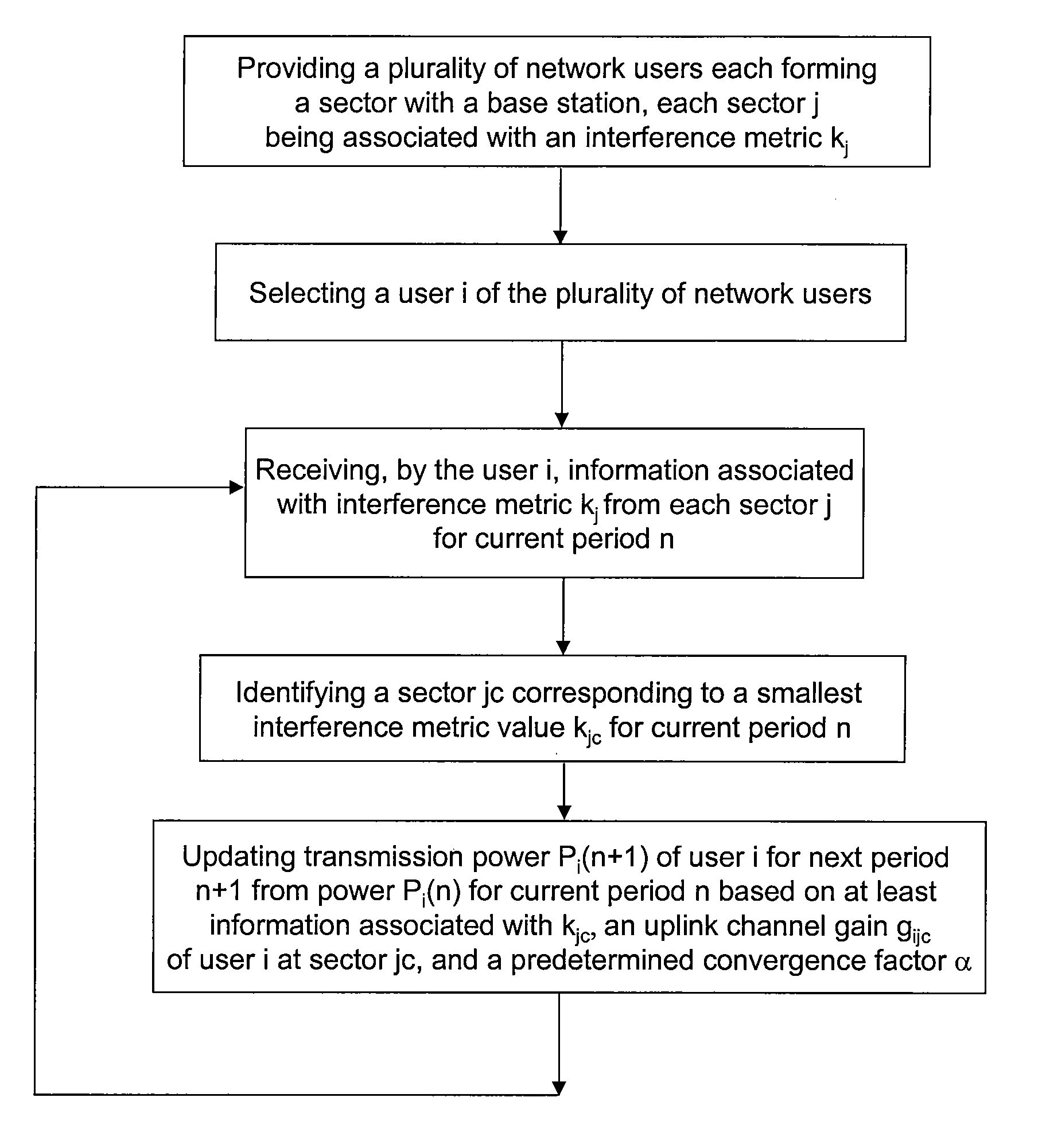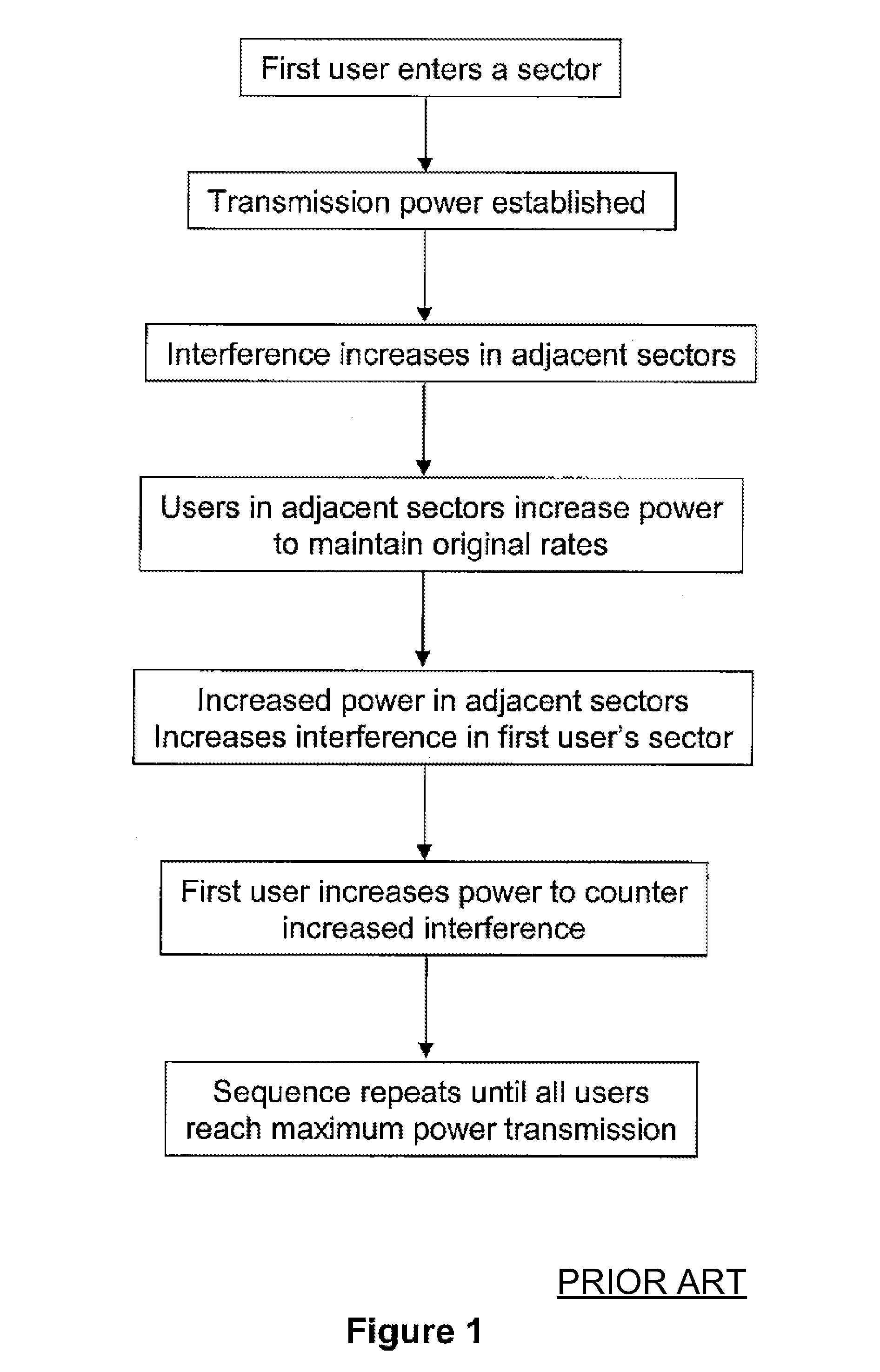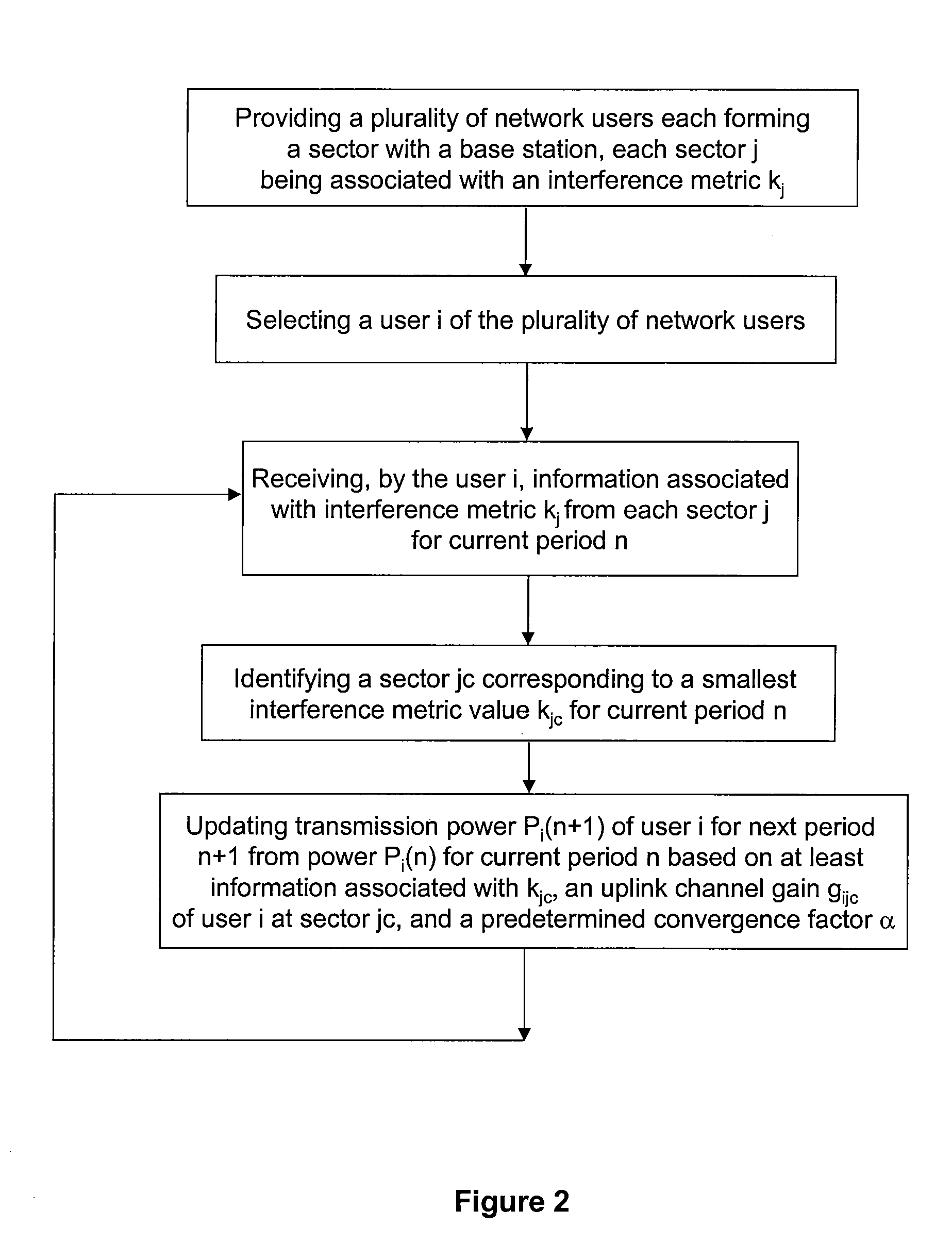Method and system for optimal allocation of uplink transmission power in communication networks
a communication network and transmission power technology, applied in the field of telecommunication techniques, can solve the problems of increasing the interference in the sector, severely restricting the signal to interference and noise ratio (sinr) achieved by the user, and still affecting the transmission user's inter-sector interference, so as to achieve a broader range of applicability
- Summary
- Abstract
- Description
- Claims
- Application Information
AI Technical Summary
Benefits of technology
Problems solved by technology
Method used
Image
Examples
Embodiment Construction
[0029]The present invention generally relates to telecommunication techniques. More particularly, the present invention relates to a method for providing a scheme for network users to manage their transmission powers and inter-sector interferences in uplink wireless communications. More specifically, embodiments of the present invention allows optimal allocation of uplink transmission power for each user with fair management of inter-sector interference in an Orthogonal Frequency Division Multiple Access (OFDMA) network. But it would be recognized that the invention has a much broader range of applicability.
[0030]The uplink frame of an OFDMA network consists of a set of tiles. Each tile consists of a set of subcarriers. In some cases these subcarriers may be spread over the entire bandwidth to provide frequency diversity for the corresponding transmissions. In other cases the tile consists of a subset of consecutive subcarriers and the channel conditions as well as the interference ...
PUM
 Login to View More
Login to View More Abstract
Description
Claims
Application Information
 Login to View More
Login to View More - R&D
- Intellectual Property
- Life Sciences
- Materials
- Tech Scout
- Unparalleled Data Quality
- Higher Quality Content
- 60% Fewer Hallucinations
Browse by: Latest US Patents, China's latest patents, Technical Efficacy Thesaurus, Application Domain, Technology Topic, Popular Technical Reports.
© 2025 PatSnap. All rights reserved.Legal|Privacy policy|Modern Slavery Act Transparency Statement|Sitemap|About US| Contact US: help@patsnap.com



